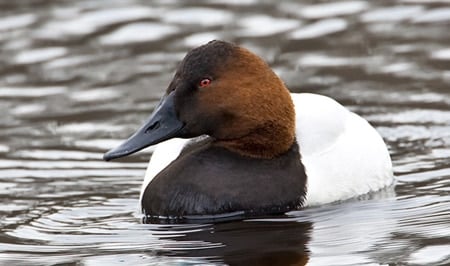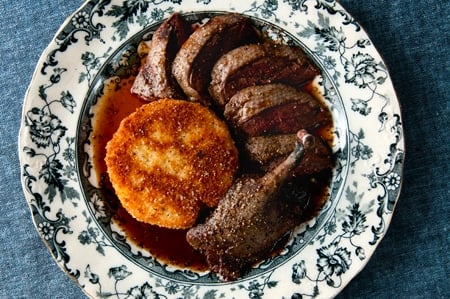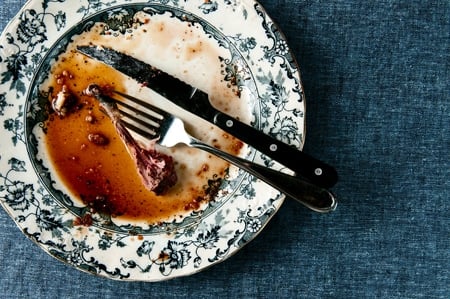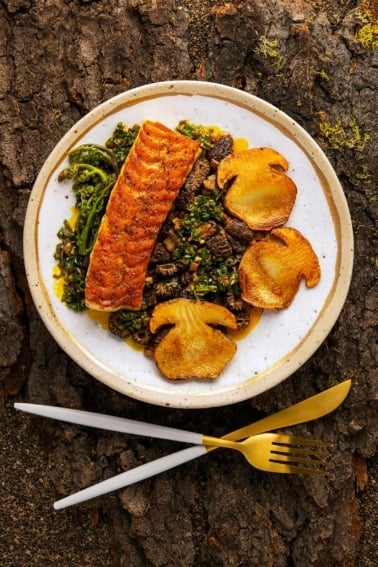As an Amazon Associate I earn from qualifying purchases.

“Get ready, here they come!” My friend RJ hissed as two ducks came roaring in over our flooded rice field, right over our decoys.
I saw them just in time. Two big ducks, flying in fast, coming right to left. I was on the far right of the blind, so I waited until they were broadside to the blind. I focused on the trailing bird. “Now!” RJ shouted, and we let fly. I dropped the trailing bird, RJ’s friend Jim dropped the lead bird.
Riley the Dog leaped off the rice check into the water and soon returned with my bird, which I’d thought was a hen mallard. But as Riley swam closer, I saw the unmistakable aristocratic bill of a hen canvasback. “Canvasbacks!” I was beaming from ear to ear. Even though I shot my first specklebelly goose of the year, a mallard and two teal that day, it is the canvasback that lingers largest in my mind.
Canvasback. King of Ducks. Or in this case, Queen of Ducks.

Aythya vallisneria, the canvasback duck. Where others dream about green-headed mallard drakes or morbidly obese pintails, I dream of King Can. It’s the historian in me.
No duck has risen to a higher plane at the table than the canvasback. George Washington prized it, as did the Robber Barons of the Gilded Age and the rough-hewn voyageurs of the Canadian frontier, who traded in beaver pelts and feasted on canvasbacks. It was, for a while, the most prestigious thing anyone could put on a menu.
That prestige was won at a terrible price. Pollution from the emerging Industrial Revolution and silt from an America increasingly yoked under the plow laid waste to the submerged gardens of wild celery, sago pondweed, wapato and wigeongrass that the ducks had once relied on. This weakened the cans, and their allure on the tables of the well-to-do sparked a hunting boom that drove the birds to the brink of extinction.
The canvasback became the poster child for the movement to ban market hunting in the early 1900s. But it was already too late. Never an overly abundant duck to begin with, there are still only about 700,000 canvasbacks in North America, compared to about 8.5 million mallards. We hunters have only been allowed to take one canvasback per day for decades, and in some cases — last year being one of them — the season on canvasbacks is closed altogether. Every canvasback we get is a trophy.
And while a mounted can is a beautiful thing, my trophies are at the table.
If you are not a hunter, you might think that all ducks are ducks. Nothing could be further from the truth. For starters, many of the ducks we hunt do not even share the same genus, let alone share the same species. A tiny teal is as different from a mallard as a quail is to a turkey. The canvasback, which can weigh in at 3 1/2 pounds for a big drake, is among North America’s largest wild ducks. So there is quite a bit of meat on one.
Secondly, every duck species has its own preferred diet. And, given its druthers, a canvasback loves nothing more than the roots of vallisneria, the wild celery. Oddly, it does not taste like celery and is not related to the garden plant. But its roots are soft, easily digestible by the ducks, and loaded with carbohydrates. Where vallisneria lives, you will find canvasbacks. If they can’t find that, canvasbacks switch to sagittaria, also known as wapato or duck potato. These are equally loaded with carbs, but they are harder to digest. One step down are sago and wigeongrass. Finally, if pushed, canvasbacks will get all Atkins Diet and switched to a diet almost exclusively of Baltic clams.
This is what cans eat when they are in San Francisco Bay, where a quarter of all canvasbacks spend their winters. But cans can’t live on clams alone (OK, maybe they can, but it makes for a good phrase.) So we will see them inland with some frequency, roaring over big water at the Delevan National Wildlife Refuge and, occasionally, in ricefields. That’s where RJ of North Wind Outfitters had invited me to hunt last week.
The hen canvasback I’d shot was pretty skinny. We’d had several days of tremendous north winds, which forces the ducks to expend far more energy than they normally would just to get from place to place. It’d be like you running everywhere you went for three days. You’d lose weight, too. We suspected that these cans were in the rice to carb up. And we were right. Her crop was full of rice, and her liver was so engorged with fat it was wild foie gras. An even rarer treat.
Diet determines flavor, but no matter what they eat, canvasbacks taste different from other ducks. Their meat is a rich crimson, their skin a pinkish buff, their fat a ghostly ivory. Earlier this fall I cooked some ducks for my friends Chris and his friend’s family while I was staying in North Dakota. They’d shot a mallard, a pintail and a canvasback. I decided to cook them all simply and not tell everyone which duck was which. Everyone agreed that the pintail was the mildest, the mallard was kinda boring, and the canvasback was the most interesting. It is “duckier” than most other species. Strong in a good way.
And our American tastebuds were more attuned to the intricacies of various meats a century ago.
A while back I wrote about how prized the now-lowly ruddy duck once was, and in flavor, a good ruddy is to a canvasback what a teal is to a pintail: Merely a smaller version of the larger, more fashionable duck. And no duck — indeed, no other animal save the terrapin or the abalone — has reached the heights of fashion of the canvasback.
Imagine the most expensive thing on a menu you can think of, excluding Cognac or rare wine. Caviar, right? A good serving of caviar at a nice restaurant might set you back $50 or more. Canvasback was once like that. A look at the century-old menus of such swanky establishments like the Waldorf Hotel in New York City shows that an order of canvasback duck would cost you $4.50 in 1907. Do a little math and that’s the equivalent of about $104 in today’s dollars. And that, most likely, is for half a duck. Wow.
Even at the market, a canvasback might cost $1.25, or the equivalent of about $32.50 in today’s dollars. Consider for a moment that the average worker in the United States earned 19 cents an hour and you realize that it would take nearly three days’ pay for that person to earn enough to order canvasback at a restaurant. King of Ducks indeed.
So how was that canvasback served at the Waldorf? As it happens, it seems that cans were such a precious item that they were served in only one way: Roasted rare, carved and served with a red currant sauce (or jelly) and a side of “fried hominy.” Always. I found nearly 40 recipes or mentions of canvasback being served, dating from 1877 to 1907 and they are all done the same way.

Clearly, I needed to recreate this recipe. First revelation: The “fried hominy” mentioned in all the old recipes is not what you think. It is not fried hominy at all, but rather cold, cooked hominy grits, cut into shapes, coated with egg and breadcrumbs and fried in lard.
Second revelation: They roasted their canvasbacks hot. I mean, HOT. Like get the oven as hot as it will go, keep it there for 20 minutes and hold on hot. None of this namby-pamby 425°F crap. Try 500°F, or even hotter. As for cooking time, every one of the old recipes had strong opinions on how long the duck should be in the oven. They ranged from 15 minutes to 30, and since I like my ducks pretty rare, I went for 18 minutes, with a 10-minute rest.
I’ve been making a sauce like the one they used for years. It is a variation of the classic Cumberland sauce, only with no flour. Frankly I like this one a little better.
The result: History on a plate. Everything went together in a harmony of rich and savory, acidic and sweet. The only thing it needed alongside was a bitter greens salad, which I will do next time I make this dish.
When that will be, I cannot say. It isn’t every day we get to bring home King Can.





Hank I tried this recipe with a Canvasback I had left over from the 2019 season and it was perfect. I was nervous to put it into such a hot oven, but it came out right on the money – medium rare. However, it only took 20 minutes.
Thanks for the write up.
Wouldn’t Waldorf Salad, (or at least a lighter modern version), be more appropriate here?
Joe: That salad was invented long after this dish was. But if you want to make a Waldorf salad to go with your canvasback, go fir it!
Made this again last night, though the recipe itself is missing so I had to wing it. Made it with a canvasback and a widgeon. Both good. The fried grits tasted bland by themselves but with the sauce and duck were fantastic. Just wonder were the recipe went for the fried grits and sauce.
Ray: It’s in my second book, Duck Duck Goose.
Where can you purchase canvasback duck?
Kevin: You can’t. Selling it has been illegal for 99 years.
Excellent, this is the third time I have tried this. Have always used canned cranberry, all that’s available. Who thought grits could be so good. Last duck of the season a beautiful drake can. Thank you so much for the recipe, my daughter even eats it. Bones are cooking for broth to make Pho, two great meals for two from one duck, truly blessed, again thanks for the recipe.
Hank! WOW! Thank you for a wonderful history lesson as well detailed instructions for the best duck dinner we’ve ever eaten, let alone cooked ourselves. I did make a fresh cranberry jelly as I couldn’t find a red currant jelly anywhere. Our 2 King Cans from the Grasslands were aged perfectly and fat. We always cook them at 500 in a cast iron- our fave way. The sauce ? Ridiculous how well it compliments the meat. Again thank you and WOW!!
Hello Hank,
My husband and I love your recipes! However, we recently learned of an egg allergy in the house and we’re curious what you’d suggest using for a substitute while cooking ducks/other wild game. Thanks so much for all of your sharing!!!
We just returned from a hunt on the Miles River, St Michaels MD; where we plan to hunt Cans when it gets right. The article was really enjoyable and I can’t help but remembering my neighbor Mr. Boyd who was raised in Havre de Grace, MD where his family owned the Hanover House and served many a canvasback diner on Sunday afternoon family style and I do recall him telling me about bowls of mashed potatoes and cornbread, also green pea soup but no cakes. We’ll give it a try since it sure sounds good.
I too hail from the mitten state and man alive do we get cans! Although I have tried a similar recipe I didn’t like the red currant sauce that came with. I am lucky to have a few cans in the freezer so I am going to try your version. Also on a side note I just used your smoked duck recipe with cans, I ended up brining for two and a half days(not sure if that was a bad thing or not) because of the past few days weather being in the -5 range during the day . But it did come out awesome , did 1 maple glazed and 1 rubbed w Cajun seasoning. RC if you have a smoker try that recipe the skin end of the meat is so flavorful it’s unreal!
Here in Michigan, we are blessed with a strong canvasback flyway. I’ve been cooking, rendering fat, flanning livers, and fly tying everything the can has to offer for years. But never even heard of anyone eating the skin!
I noticed in your before photo, that you left the skin on when plating up. In the after photo, nothing left but a bone.
Am I to surmise that you devoured the skin too? If so, is it the super hot oven that makes the difference?
For that matter, I wonder what else can be done with the skin? I’d hate to think that I’ve been missing out on yet another “best part”…